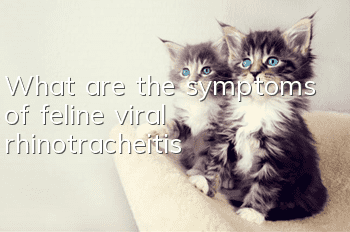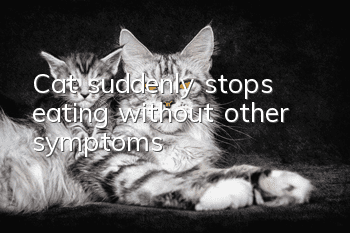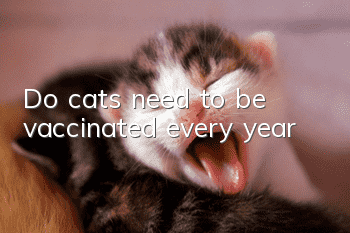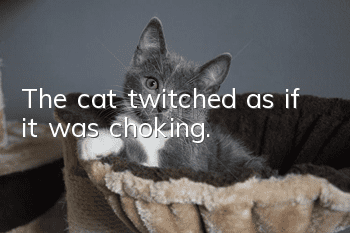What are the symptoms of feline viral rhinotracheitis?

Feline viral rhinotracheitis mainly affects young cats. The incubation period is 2 to 6 days. The body temperature of young cats rises to about 40℃ in the early stage of the disease. The symptoms of upper respiratory tract infection are obvious. The cats will have paroxysmal coughing, sneezing, Symptoms include tearing and increased nasal secretions, and the cat is accompanied by depression, decreased appetite, and weight loss. Infection in adult cats usually presents with symptoms of conjunctivitis, white spots appearing on the eyes, which can lead to stomatitis and ulcerative glossitis, resulting in sticky and smelly discharge from the cat's mouth. Some may develop reproductive organ lesions, such as vaginitis, miscarriage, etc. Kittens are more susceptible to viral rhinotracheitis than adult cats, and the symptoms of the disease are more obvious in kittens. Sick kittens die in about half a month, and the mortality rate from secondary infection is even higher. Generally, the case fatality rate of kittens is 20% to 30%, and the case fatality rate of adult cats is relatively lower.
How to prevent feline viral rhinotracheitis:
1. Strengthen the feeding and management of cats, maintain environmental hygiene, and give cats a clean and warm place to live. Ensure that the room is well ventilated, and regularly disinfect the floor, cat's food trough and water basin. Of course, also ensure that the cat's food is fresh enough.
2. Cats carrying the virus cannot be used as breeding cats to breed the next generation, because they will be transmitted to newborn kittens. Therefore, it is recommended that cat owners who buy cats from catteries or online must first understand their basic conditions. It is best to know whether their parents are healthy, and do not buy sick cats because of petty gains.
3. Vaccine prevention method. Feline viral rhinotracheitis can be prevented by injecting feline triple vaccine. This is also the safest and most effective method to prevent this disease.
- Why do cats gain weight after being neutered?
- Why does a cat bite more when it bites?
- The kitten meows while eating
- How to find a lost cat? Have you mastered the golden time?
- Daily care methods and hair care tips for Persian cats
- What to do if a Canadian hairless cat suffers from postpartum hemorrhage
- Is it possible to cure cat plague?
- Why do cats need cat litter?
- Can cats drink yogurt? Anmuxi
- Cat vomits yellow water after vaccination



